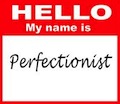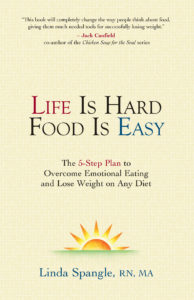
What’s in my way?
Are you an “all or nothing” person? Even if you don’t think it’s affecting you, perfectionism can block you from reaching your goals.
Most perfectionists tend to follow the same theme—do it right or don’t do it at all. But since they never reach the point where they can do it “right,” perfectionists never start.
Whenever you get hung up on the “right” way to do something, you lose sight of all the other possibilities.
As a perfectionist, you not only apply this yourself, you also hold a tight expectation around other people’s behaviors.
Living in black and white
For almost everything in life, you form a picture of how you think it “should” be.
If you go into a bank, you expect the money to be stored in the vault, not carelessly thrown around on the counters. At a nice restaurant, you picture clean tables, attentive wait staff, and high-quality food.
Think of your picture as a square, sort of a mental snapshot of what you expect.
Typical expectation square

It’s fine to have expectation squares for things in life. But sometimes you create very small mental pictures by applying rigid expectations to people or things around you.
Unfortunately, when you hold a tight frame around a situation or a behavior, you risk being disappointed or upset because reality won’t match your picture.
Rigid expectation square
![]()
Think about times you’ve been disappointed with something you’d hoped for. You anticipate your children will be excited when they open their holiday gifts, but instead they act hurt because they didn’t get what they wanted.
After you give up an entire Saturday to run errands for your grandmother, you expect her to appreciate your efforts. Instead, she complains that you should have been there last week.
When your expectations aren’t met, it’s easy to reach for food to try to “fix” your anger or frustration. Of course, that hurts YOU, not the person or situation that didn’t match your needs.
You also might be using a tight expectation square around your own behavior. Rather than set up a realistic eating plan, you design one that’s rigid and overly strict. Then, if you eat a cookie that wasn’t on your plan, you feel so disgusted that you give up and eat more.
If you get upset because life doesn’t match your expectations, you need to widen your square and change the picture of what you consider acceptable. Apply this to your own behavior as well as to what you expect from others.
Fill in the square with the new picture, then ask yourself:
Could it be like this and still be okay?
Imagine all the areas where you could apply this concept. Suppose your child brings home a disappointing report card. What if the person in front of you at the grocery checkout has eleven items instead of ten?
How about when your overworked boss snaps at you? Could you widen your expectation square to accommodate these situations? Or will you maintain a rigid set of rules for what people “should” do?
Now look at the expectations you set for yourself.
What if you make one tiny slip on your diet? Does that really mean you have to go off your plan the rest of the day? If you constantly measure yourself against a rigid standard, you will seldom achieve your goal.
Rather than giving up because of “all or nothing,” widen your expectations to allow for more options.
Work out an eating plan that allows flexibility while still following your guidelines. Take the same approach with your exercise program or your efforts to avoid munching in response to stress.
By making your pictures more flexible, you’ll have a better chance of life matching them.
Note: This is “Part 2” of the lesson on “What’s in my way?“
 If you haven’t done it yet, read Chapter 9 in Life is Hard, Food is Easy, then work on the exercises in that chapter. Use your own notebook or journal to record what your thoughts and insights.
If you haven’t done it yet, read Chapter 9 in Life is Hard, Food is Easy, then work on the exercises in that chapter. Use your own notebook or journal to record what your thoughts and insights.